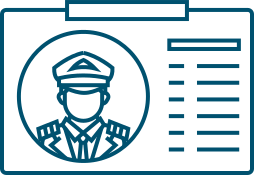Professional Profile

Research, synthesise and practically apply knowledge whilst exploring the story of Australia’s most epic flight.

LEARNING OBJECTIVE:
Learn about the story of the Vickers Vimy (G-EAOU) and the four men who undertook the flight.
Synthesise and apply learning by creating a cover letter and C.V. for one or more of the four men.

SUCCESS CRITERIA:
Demonstrate learning by synthesising information to create a cover letter and C.V. using research.

GETTING STARTED
Have your students ever heard of Australia’s Great Air Race? Do they know the names Ross and Keith Smith? If so, what do they know about them? What is their understanding of the beginnings of air travel?
Get to know the story with one or both of these short videos:
The Greatest Air Race – Trailer
Epic Flight Centenary
Optional: Complete the Reading Comprehension lesson to bolster students overall understanding of the topic.

Professional Profile
Students will be learning about the four crew members and applying their knowledge to the task. Begin by assigning each student one of the crew members, Ross Smith, Keith Smith, Wally Shiers and Jim Bennett.
They should research their crew member by using Australia’s Great Air Race as well as outside sources, focusing on life before the flight. They will then use what they have learnt to write the cover letter and C.V. of the crew member, imagining that the crew member is in the process of applying to take part in Australia’s Great Air Race.
Take time for students to share their profiles and letter and compare the findings of students working on the same crew member.

NEXT STEPS
There are so many things to learn, so dive deeper and sink your teeth into one or more of these single-lesson or longer format activities available on the Vickers Vimy Learn page.

CURRICULUM LINKS
Year 5
English – Navigate and read texts for specific purposes, monitoring meaning using strategies such as skimming, scanning and confirming (AC9E5LY04).
Use comprehension strategies such as visualising, predicting, connecting, summarising, monitoring and questioning to build literal and inferred meaning to evaluate information and ideas (AC9E5LY05).
Plan, create, edit and publish written and multimodal texts whose purposes may be imaginative, informative and persuasive, developing ideas using visual features, text structure appropriate to the topic and purpose, text connectives, expanded noun groups, specialist and technical vocabulary, and punctuation including dialogue punctuation (AC9E5LY06).
Year 6
English – Select, navigate and read texts for a range of purposes, monitoring meaning and evaluating the use of structural features; for example, table of contents, glossary, chapters, headings and subheadings (AC9E6LY04).
Use comprehension strategies such as visualising, predicting, connecting, summarising, monitoring and questioning to build literal and inferred meaning, and to connect and compare content from a variety of sources (AC9E6LY05).
Plan, create, edit and publish written and multimodal texts whose purposes may be imaginative, informative and persuasive, using paragraphs, a variety of complex sentences, expanded verb groups, tense, topic-specific and vivid vocabulary, punctuation, spelling and visual features (AC9E6LY06).
Year 7
English – Use comprehension strategies such as visualising, predicting, connecting, summarising, monitoring, questioning and inferring to analyse and summarise information and ideas (AC9E7LY05).
Plan, create, edit and publish written and multimodal texts, selecting subject matter, and using text structures, language features, literary devices and visual features as appropriate to convey information, ideas and opinions in ways that may be imaginative, reflective, informative, persuasive and/or analytical (AC9E7LY06).
Year 8
English – use comprehension strategies such as visualising, predicting, connecting, summarising, monitoring, questioning and inferring to interpret and evaluate ideas in texts (AC9E8LY05).
Plan, create, edit and publish written and multimodal texts, organising and expanding ideas, and selecting text structures, language features, literary devices and visual features for purposes and audiences in ways that may be imaginative, reflective, informative, persuasive and/or analytical (AC9E8LY06).
Year 9
English – Use comprehension strategies such as visualising, predicting, connecting, summarising, monitoring, questioning and inferring to compare and contrast ideas and opinions in and between texts (AC9E9LY05).
Plan, create, edit and publish written and multimodal texts, organising, expanding and developing ideas, and selecting text structures, language features, literary devices and multimodal features for purposes and audiences in ways that may be imaginative, reflective, informative, persuasive, analytical and/or critical (AC9E9LY06).

